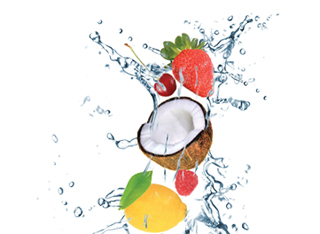This land is put to good use, as the value of Maryland ag products reached $2.27 billion, up 24 percent from the previous census. Top commodities included apples, watermelon, potatoes, sweet corn, and snap beans for a total fruit and vegetable value topping more than $1 billion for 2012, which included nursery and greenhouse crops, a boon to the state when fluctuating temperatures and crazy weather takes their toll on production. Indeed, Maryland growers found themselves in a constant battle with nature, often struggling against pests, wildlife, and the region’s rather famously unpredictable weather. Late snowstorms delayed spring, which found some growers planting furiously, weeks later than usual. Maryland Department of Agriculture (MDA) Secretary Buddy Hance com-mented: “Farmers operate on the average—they take the good and the bad, and hope to end up somewhere in the middle.” Aside from the many complications and challenges, however, Hance was quite optimistic that the state’s growers would “have a good year.”
Sustainability/ Buy Local
The 2012 Census also highlighted the region’s changing demographics, including a rise in Hispanic and Asian populations. Purveyors at the Jessup Market continue to adjust commodity mixes as needed, offering exotic and specialty commodities like chayote, galangal (often called blue ginger), malanga lila, starfruit, yuca root, and others. The MDA has also been taking soil erosion and sustainability very seriously. The Census provided a dose of good news, showing a slight decrease in cropland losses—from 1.3 percent (25,874 acres) in 2007 to 1.0 percent (21,011 acres) in 2012—better than the 5.5 percent loss of more than 115,433 acres in 2002. Taking action to prevent soil erosion is only one of the many things the MDA has been doing to improve sustainability. Secretary Hance lauds the state’s efforts, highlighting several projects including the Maryland Farm to School Initiative, rising enrollment in cropland conservation programs, and more than $26 million in grants under the Maryland Agricultural Water Quality Cost Share program. One of the MDA’s most popular programs remains Maryland’s Best, touting the state’s locally grown commodities. “One thing is for certain,” states Secretary Hance, “consumer demand continues to grow for locally-grown products.” And of course, Hance believes Maryland’s output is not only “among the freshest, best available” product, but is a major benefit to producers and consumers alike.
Challenges
With one of the harshest and longest winters on record, the produce industry definitely felt the pressure—whether it be shaky supply, delays and delivery problems, or costly closings. Aside from the ever-volatile weather, new regulations stand to impact the industry in both the short and long term. The presence of Washington DC can certainly be felt by grower-shippers, brokers, and in the vast halls of terminal markets. In the middle of the pros and cons sits passage of the new Farm Bill.



